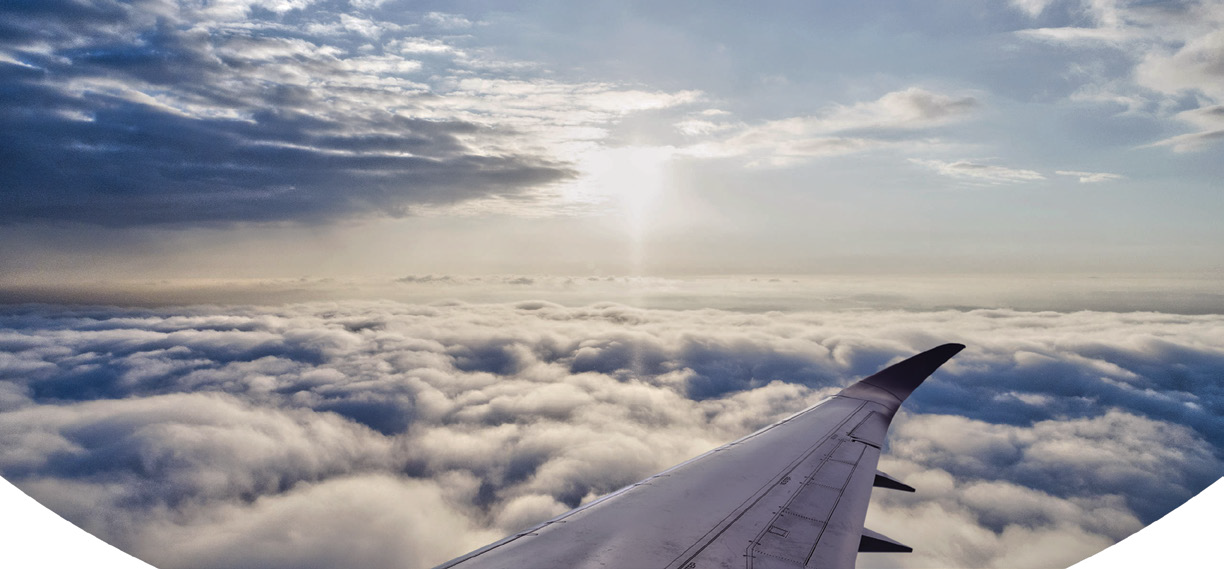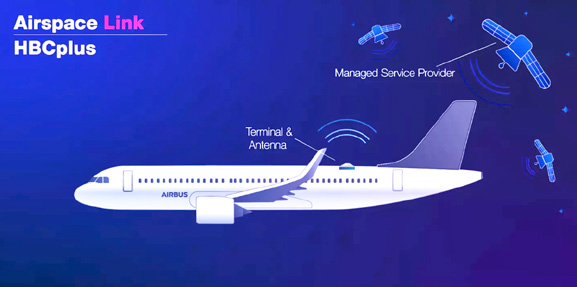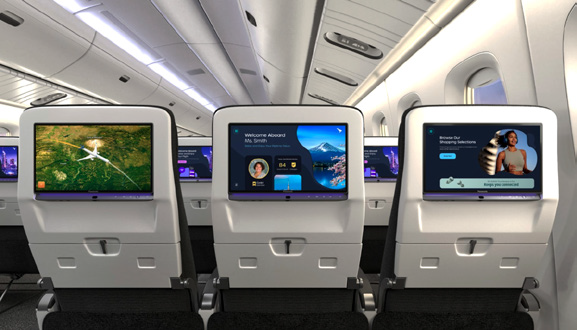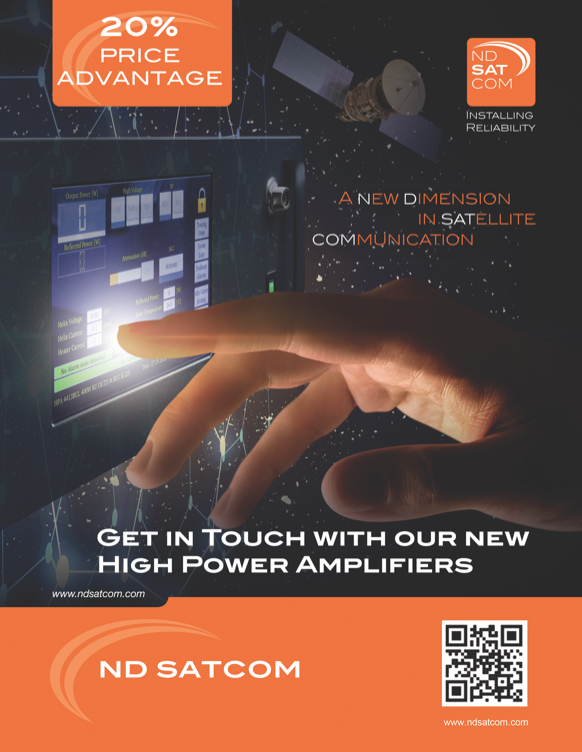John Wade joined Panasonic Avionics Corporation in 2022 and he is responsible for the overall strategy, performance, and day-to-day operations of the Connectivity business unit. He will oversee a team of network capacity engineers and satellite experts, while working closely with sales, engineering, and product management to drive revenue and support airlines worldwide. Wade is an industry recognized expert who most recently served as the President of Commercial Aviation at Intelsat, which acquired GoGo’s Business Aviation business in 2020.

Good day, Mr. Wade. What differentiates Panasonic Avionics’ satellite connectivity offerings from those of other providers?

John Wade
John Wade
Panasonic Avionics is building a comprehensive, multi-orbit connectivity network. This strategic network coverage extends to 99.8% of global airline routes, enhancing the connectivity experience for passengers. Our approach is to offer both LEO and GEO to give the best of both worlds to our customers by remaining laser focused on the “three C’s” of inflight connectivity — Coverage, Capacity, and Cost.
Unlike our competitors, we do not own or operate our own satellites. Instead, we lease capacity from the best satellite technology on the market. Working with satellite operators, each of whom we know on a first name basis, we have the flexibility to add coverage and capacity when and where such is needed.
This independent leasing strategy is key for Panasonic Avionics as it significantly mitigates the risks associated with satellite launch failures, technology glitches as well as the challenges of achieving a return on satellite- building investments. This also lets us deliver a high quality, uninterrupted service that ultimately allows us to provide passengers with an optimal, in-flight connectivity (IFC) experience, complete with redundant capacity and coverage.
What are the key benefits to your multi-orbit connectivity network?
John Wade
The multi-orbit approach offers airlines a wider array of options, featuring products that support impressive, forward link speeds of up to 200 Mbps and return link speeds of up to 32 Mbps across all routes, even those traversing remote polar areas.
However, one of the features I’m most excited about is the introduction of LEO satellites into our network. In the demonstrations we’ve done with our partner, Eutelsat OneWeb, we’ve been able to show airlines the dramatic effects low latency has on the passenger experience. This is a game changer for our industry and we’re excited to bring it online later this year.
How do you plan to expand your satellite network in the years to come?
John Wade
For the past few years, we have seen exponential growth in the adoption of IFC — passengers want faster internet speeds for traditional services, such as email, web browsing, social media, and messaging, and they are increasingly looking to stream content, play games in flight, and use collaborative, cloud-based applications.
From Panasonic Avionics’ perspective, there is no end in sight to this demand. We will always be optimizing our network to ensure reliable, robust high-speed, in-flight, Wi-Fi service. For example, we’ve just completed a major expansion of the GEO portion of our network, adding more than 50 percent capacity to ensure reliable, robust, high-speed, in-flight Wi-Fi service.
With this network-wide enhancement, we’re using the latest, cutting-edge satellite technologies to ensure speeds of up to 75 Mbps per aircraft over HTS and up to 200 Mbps over what we call XTS or Extreme Throughput Satellites. We’ve also broadened our reach, adding more coverage that spans continents and oceans. For the foreseeable future, we can continue to offer the experience passengers expect when they fly on Panasonic Avionics-equipped aircraft.
We’re not done. We’re also working closely with Eutelsat OneWeb to bring LEO online later this year. There are some key differences to our approach when compared to other operators using LEO networks today. Eutelsat OneWeb
is dedicated to Committed Information Rates (CIRs) as a significant part of their network for mobility to ensure a guaranteed, service level. They’re looking at this as an enterprise-level service. Equally as important, they are willing to do more than that if necessary. As a result, our customers can rest assured that they will always get the best network performance, not a best effort, which is what we’ve witnessed with other IFC players.
How will this expansion benefit airlines and their passengers?
John Wade
The low latency of LEO is considered a step change for IFC as it is less than 100 milliseconds. At that level of responsiveness and speed, we can now unlock new passenger experiences that include seamless support for enterprise applications, live gameplay, video conferencing, VoIP communication, and many other features.
When you combine the latency performance of LEO with the benefits of using GEO for video streaming and other applications, you’re looking at a superior experience for both airlines and their passengers.

I’m also really excited about using connectivity to unlock new opportunities for airlines and exciting experiences for passengers using traditional In-Flight Entertainment product. When we can take an amazing product, such as our Astrova seat-end solution, connect it to our multi-orbit network, and then layer in our digital solutions, we effectively create that digital third channel for airlines that seamlessly blends the airline’s digital experience across the entire travel journey. (Astrova product video is available at this direct link.)
Airlines can foster deeper connections with passengers through personalized experiences that are empowered by data-driven insights fed to them in real time by our connectivity service from the aircraft. Our customers can then use our self-service tools to create and deploy experiences that are an extension of their passengers’ lives, blending their interests with the airline’s unique offering to create an unforgettable, memorable, customized experience.
To do this, you need a connected seatback, and the investments we’re making in LEO and GEO let us realize this vision, and we think it’s going to transform the way in which In-Flight Entertainment and Communications (IFEC) supports passengers and airlines.
How do you collaborate with airlines and other industry partners to ensure seamless integration of your inflight connectivity solutions with IFE and other aircraft systems?
John Wade
Panasonic Avionics is built around four business units – In-flight Systems, Digital Solutions, Technical Services, and IFC. We have deep experience working with the world’s leading airlines to help them realize their brand and commercial objectives.
With connectivity, we want to make it as easy as possible to equip their aircraft and then deliver an industry-leading product. That’s why we’re linefit offerable at Boeing and Airbus for virtually all single and dual-aisle airframe types, and we have the necessary approvals to serve the retrofit market.
We’re also excited to have a formal agreement with Airbus to be part of their HBCplus program. We’ll be able to do some interesting things in partnership with Airbus, by integrating our multi-orbit connectivity service onto Airbus aircraft,
using an electronically steered antenna (ESA) with a multi-beam operation that can simultaneously access Panasonic Avionics’ LEO and GEO networks.
This is an important and strategic collaboration that will allow Panasonic Avionics to serve Airbus aircraft with our multi-orbit network of GEO and LEO satellites and cover 99.8 percent of all commercial flights, including polar routes.
Do you believe all airlines will eventually be offering free Wi-Fi?
John Wade
Every airline is unique. Some have gone completely free of charge. Some are experimenting with partnerships that subsidize the cost of connectivity for passengers. Others are offering various tiers of service based on a passenger’s status within the airline’s loyalty program.
I believe that we’ll see some of the commercial aviation industry adopt the free Wi-Fi model for passengers by the end of this decade. Other airlines might opt for different pricing models, where the Wi-Fi costs are borne by the passengers’ cell phone provider, such as T-Mobile is doing for some of their customers in the U.S.
How do you see the connectivity landscape changing over the next five years or so?

John Wade
I’m truly optimistic about our market. We’ve reached a point in the IFC market where the things we’ve discussed in years past — elements such as electronically steered antennas — are ready to improve the airline and passenger experience.
I expect, however, to see more consolidation in our industry, and I believe this will likely come down to three to four major players in this market. Those of us who can deliver on airline and passenger expectations will be able to build sustainable businesses that will enhance air travel.
I think that we’re still likely to see the market continue to consolidate, and those of us who understand our customers and then meet the expectations of passengers will be the long-term partners for airlines.
What are Panasonic Avionics’ satellite connectivity priorities for the 2024 and beyond?

John Wade
Currently our focus is to bring our LEO constellation online. We’ll also continue to work closely with Airbus on HBCplus to ensure the best outcomes for our mutual customers. We’ll continue to optimize our GEO network to really capture the benefits of our multi-orbit approach.
In this business, you must perpetually evolve and innovate, and Panasonic Avionics will continue to do so.
www.panasonic.aero


